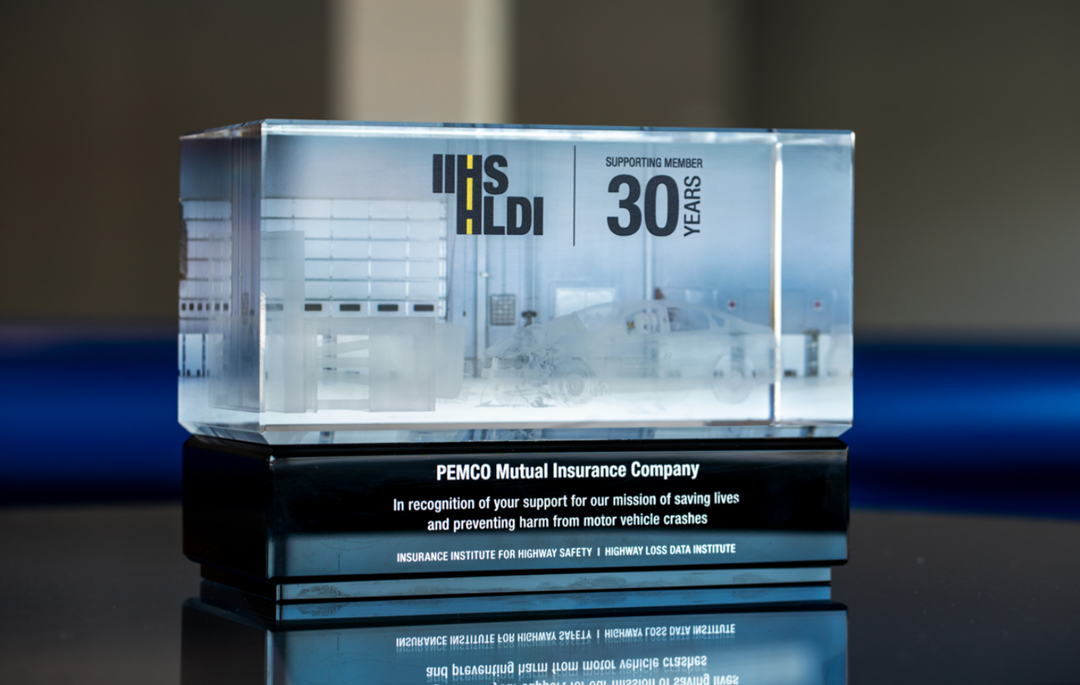PEMCO receives "30 Year" award from IIHS
.png) PEMCO recently earned a “30 Years” award for our decades-long partnership with the Insurance Institute for Highway Safety (IIHS) and Highway Loss Data Institute (HLDI). Since the '80s, we've been invested in their work--and even sacrificed some cars in the process!
PEMCO recently earned a “30 Years” award for our decades-long partnership with the Insurance Institute for Highway Safety (IIHS) and Highway Loss Data Institute (HLDI). Since the '80s, we've been invested in their work--and even sacrificed some cars in the process!
That collaboration has helped set in motion changes that forever altered the way cars are manufactured in the United States. We’re honored to receive this award and celebrate more than years of making roads and vehicles safer with IIHS.
What are IIHS and HLDI?
These nonprofit research and safety organizations are funded by consumer insurance companies like PEMCO. Their work taps into claim data on 400 million vehicles collected by insurers across the country. Researchers combine it with manufacturer and other information to quantify the benefits of life- and cost-saving technologies.
They also overlay state laws to see where policy and safety intersect when it comes to things like speed limits, DUI legislation and much more.
One thing that sets IIHS and HLDI apart from other safety-rating organizations is their speed of real-world data collection. They receive details of thousands of insurance claims from all seasons, regions, vehicle makes and driver demographics. IIHS and HLDI safety experts can quickly hone in on trends showing innovations that are working (or not) and share findings with the public, regulators and, perhaps most importantly, car manufacturers.
Their research is neatly distilled each year in Top Safety Picks car recommendations, free to consumers.
How one rear-end collision helped change cars forever
In 1991, PEMCO executive and future President and CEO Stan McNaughton got rear-ended while driving his Ford Aerostar minivan. The crash was unremarkable – about $1,000 in damage – but it left him with whiplash when his vehicle's too-short head restraint worked as an axis to overextend his head and neck in the crash.
That painful experience was the beginning of a journey to improve head-restraint design. Stan wondered how head restraints could be modified to reliably protect people of varying heights
Fast-forward two years; Stan and his PEMCO team flew to the IIHS Vehicle Research Center in Virginia to witness the first-ever head restraint crash test. In those pre-simulation days, two 1989 Oldsmobile Cieras were sacrificed for the test. PEMCO donated them.
The test revealed that head restraints positioned no lower than the crash-test dummies' ears significantly reduced the whiplash effect. At the time, about 25% of claims paid were for whiplash injuries suffered in crashes with head restraints too low to be effective.
PEMCO became the first insurance company in the nation to run radio and TV public-service announcements urging people to set their head restraints (if possible) no lower than their ears. Our efforts garnered national attention with the prestigious Lifesaver Award from the National Highway Traffic Safety Administration – a rare distinction for a regional insurer.
Since then, rear-collision sled-testing has become a regular part of IIHS new-car evaluations. And head restraints that protect drivers of all heights have become as standard as seatbelts and airbags.
Today and beyond
PEMCO's commitment to IIHS and HLDI has only grown through the years, spanning innovations in everything from airbags to AI. Since that long-ago test with the Cieras, diverse teams of PEMCO claims adjusters and executives have regularly visited the IIHS Vehicle Research Center, both as observers and to share their field experience working with customers whose lives have been changed through the triumphs (or shortcomings) of vehicle safety technology.
Share on social media